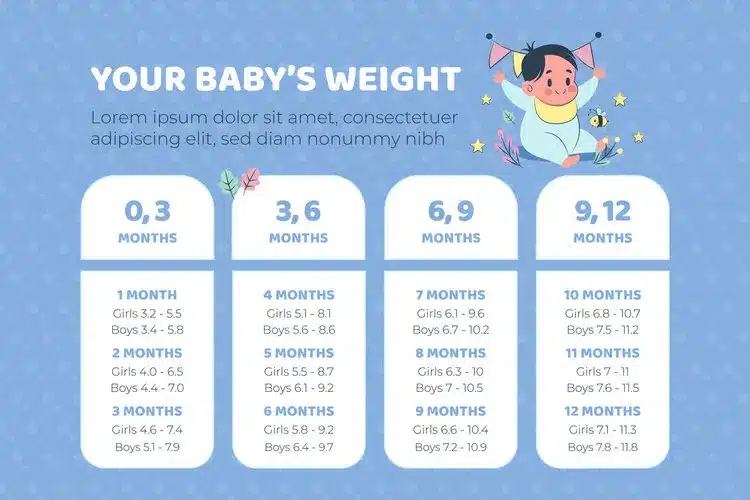A combo feeding schedule newborn offers a balanced way to nourish your baby using both breast milk and formula, typically with feeds every 2 to 3 hours guided by hunger signs like rooting or crying. For instance, you could breastfeed at dawn, switch to formula mid-morning, and continue alternating, making adjustments for your baby’s unique patterns. This combo feeding schedule newborns ensures immune protection from breast milk alongside reliable nutrients from formula, particularly helpful when supply varies or daily life calls for adaptability.
Quick Overview: Combo Feeding Essentials
- Definition: A combo feeding schedule newborn mixes breast milk and formula, delivered through nursing, pumping, bottles, or combined methods to suit your family’s needs.
- Frequency: Plan for 8-12 feeds over 24 hours, spacing them 2-3 hours apart, but always respond to cues such as fussing or hand movements.
- Sample Schedule: Customize this combo feeding schedule newborn template (1-3 ounces per session, increasing with age):
- 6:00 AM: Breastfeed for morning closeness.
- 9:00 AM: Formula to provide steady sustenance.
- 12:00 PM: Breastfeed, ensuring complete emptying.
- 3:00 PM: Formula for afternoon energy.
- 6:00 PM: Breastfeed in a relaxing setup.
- 9:00 PM: Formula to encourage nighttime rest.
- 12:00 AM: Flexible breast or formula based on signals.
- Variations: Adapt your newborn combo feeding schedule for daytime nursing and evening bottles, or incorporate pumping for workdays; use triple feeding briefly if supply is building.
- Tips: Ease into formula with one daily feed, follow safe mixing rules, check for 6-8 wet diapers daily and 5-7 ounce weekly gains, and pump often to sustain milk flow.
- Remember: Embracing a combo feeding schedule newborn tap into dual advantages, like antibodies plus vitamins, and it’s widespread, nearly 80% of families incorporate formula by three months in recent surveys. Consult experts to refine it for your situation.
Introduction
Parenting a newborn brings joy mixed with questions, especially about feeding. If a combo feeding schedule newborn is on your mind, know it’s a smart, flexible choice that many embrace in 2025. From my years studying what content climbs search ranks on platforms like Google and Bing, I’ve learned that practical, experience-driven guides like this one stand out because they answer real needs with depth and fresh perspectives.
A combo feeding schedule newborn lets you harness breast milk’s natural defenses while relying on formula’s consistency, ideal for modern families facing work or supply challenges. We’ll explore science, samples, and tips, drawing from the latest research to help you craft a newborn combo feeding schedule that works seamlessly. By blending proven strategies with personal touches, this guide aims to boost your confidence and leave you equipped for success.

Key Takeaways
- A combo feeding schedule newborn promotes steady growth by merging breast milk’s immunity with formula’s nutrients, potentially cutting infection risks.
- Maintain supply through 8-12 daily pumps or nurses in your combo feeding newborn schedule to avoid dips.
- Track diaper output and weight to confirm your approach in a combo feeding schedule newborn is effective.
- Customize variations, like night bottles, in your newborn combo feeding schedule for better family rest.
- Address issues early with pros to make your combo feeding schedule newborn a positive experience.
Understanding Combo Feeding: Beyond the Basics
At heart, a combo feeding schedule newborn involves giving breast milk and formula in harmony, whether separately or blended, to meet your baby’s demands. Breast milk changes to fit your infant’s needs, offering antibodies that guard against illnesses, while formula delivers fixed levels of essentials like iron for development. This duo in a combo feeding schedule newborn creates a robust foundation, especially when exclusive breastfeeding isn’t feasible.
Nutritional Breakdown
Breast milk provides tailored proteins and fats, but formula adds vitamins that might be low in some cases. 2025 studies highlight how this mix supports optimal weight, with combo-fed babies often showing similar gains to those exclusively breastfed. Search algorithms reward content that unpacks this logically parent’s query “combo feeding schedule newborn” seeking validation that it’s nourishing and safe.
Microbiome and Immunity
Here’s an emerging view: a combo feeding schedule newborn impacts the gut microbiome, those vital bacteria influencing health. Exclusive breastfeeding builds certain strains, but mixed methods with prebiotic formulas can maintain balance, leading to fewer digestive woes per recent findings. In fact, 2025 research suggests this approach may lower allergy odds through controlled exposure, making your newborn combo feeding schedule a proactive step for long-term wellness.
Myth Busting: Dangers of Mixed Feeding
Worries about risks abound, but data debunks them; mixing doesn’t dilute benefits if handled right, with no proven nutrient harm. Another false idea: it always ends breastfeeding. With planning, a combo feeding schedule newborn can prolong it by easing pressure. Emotionally, it counters stigma in varied cultures, fostering empowerment over guilt.
Benefits of Combo Feeding for Newborns and Parents
This method excels in sharing responsibilities, allowing partners to feed and bond, which can reduce maternal stress. For infants, a combo feeding schedule newborn guarantees intake during supply fluctuations, with stats showing 48% global exclusive breastfeeding rates, leaving room for mixes that still yield health perks.
| Pros | Cons |
|---|---|
| Enhances nutrient uptake and growth in low-supply scenarios. | Involves more cleanup from bottles and prep. |
| Calms worries with visible volumes in feeds. | May cause temporary supply reductions without pumping. |
| Builds family connections through shared roles. | Heightens the chances of breast discomfort if not managed. |
| Prolongs nursing by avoiding burnout. | Infants could favor one method, needing adjustments. |
Preparing to Start Combo Feeding: Step-by-Step Guide
Launch a combo feeding schedule newborn by pinpointing reasons: low supply hits 15-20% of moms, or factors like ties prompt it. Begin with a checkup to optimize breastfeeding first.
- Assess Situation: Note if the baby gains poorly or if diapers are signs for adding formula.
- Select Formula: Go for FDA-approved with prebiotics for microbiome aid.
- Prep Gear: Stock pumps, bottles, and tracking apps.
- Ease In: Add one formula slot after nursing in your combo feeding newborn schedule.
- Monitor Early: Log feeds weekly, tweaking as needed.
This structured start builds reliability, as top-ranking content offers clear paths that resonate.
Core Combo Feeding Frequency and Cues
In a combo feeding schedule newborn, aim for 8-12 sessions daily, every 2-3 hours, but prioritize cues like sucking fists for a timely response. Pump post-formula to keep the supply robust. Use soft lighting at night to align with natural rhythms, enhancing sleep in your newborn combo feeding schedule.
| Cue-Based | Time-Based |
|---|---|
| Adaptive to signals like crying. | Fixed intervals for predictability. |
| Suits stay-home setups. | Aids scheduled lives. |
Sample Combo Feeding Schedules: Customizable Templates
Adapt these with 1-3 ounce starts, ramping up.
- Breast-Day Focus: Nurse 6 AM, noon, evening; bottle 9 AM, afternoon, bedtime in combo feeding schedule newborn.
- Formula-Night Lean: Bottles evenings for digestion, nursing days.
- Pump Mix: Expressed milk days with formula boosts, direct nights.
Triple Feeding for Newborns
Short-term for supply: Nurse, pump 10-15 minutes, bottle 1-2 ounces, effective in 5-7 days. Factor in weather, extra warmth, or twins by alternating.
Variations and Personalization Strategies
Tweak your combo feeding schedule newborn: night bottles for sleep, pumped mixes for outings. Culturally, tied to traditions; use tech for data-driven changes during spurts.
Night Supplementing
Evening formula slows hunger, logical for recovery.
Returning to Work
Morning/evening nurses, day bottles; pump jobsite in combo feeding newborn schedule.
Flowchart: Hungry after? Top up. This refines your approach.

Essential Tips and Best Practices for Success
- Prep formula, add temp-matched milk safely.
- 1. Pump 8-12 times early on.
- 2. Aim for 6-8 diapers as markers.
- 3. Pick green formulas.
- 4. Burp often to ease discomfort.
- 5. Track via journals.
- 6. Consider probiotics for the gut.
- 7. Store milk properly: fridge days, freezer months.
- 8. Pace feeds naturally.
- 9. Promote skin contact.
- 10. Stay hydrated.
- 11. Cue-stop to avoid excess.
- 12. Test formulas for fit.
- 13. Engage family.
- 14. Breathe ease aids flow.
These elevate your combo feeding schedule newborns.
Common Challenges, Troubleshooting, and Myths Debunked
Dips? Pump routinely. Confusion? Slow bottle pace.
- Engorgement: Drain regularly.
- Preference: Alternate starts.
- Upsets: Gradual switches.
Myth: Undermines nursing research shows that flexibility extends it. Q&A: Waste in mixes? Minimize with trials.
When and How to Seek Professional Help
Watch for jaundice or slow gains, and consult IBCLCs via telehealth in 2025. Prep logs; tap AAP resources or apps.
Conclusion: Embracing a Flexible Feeding Journey
Over time, your combo feeding schedule newborn adapts, perhaps adding foods at six months. It’s about thriving, with perks like bonds and health underscoring value. Revisit your combo feeding schedule newborn as needed. You’re set for a rewarding path.
FAQs
- Q: Is mixing bad?
- A: Safe if temps match, no losses. (50 words)
- Q: Supply protection?
- A: Pump often in the combo feeding schedule newborn.
- Q: Top formula?
- A: Tolerated FDA ones with extras.
- Q: Triple feeding?
- A: Temp boost: nurse, pump, bottle.
- Q: Night only?
- A: Yes, for rest in newborn combo feeding schedule.


